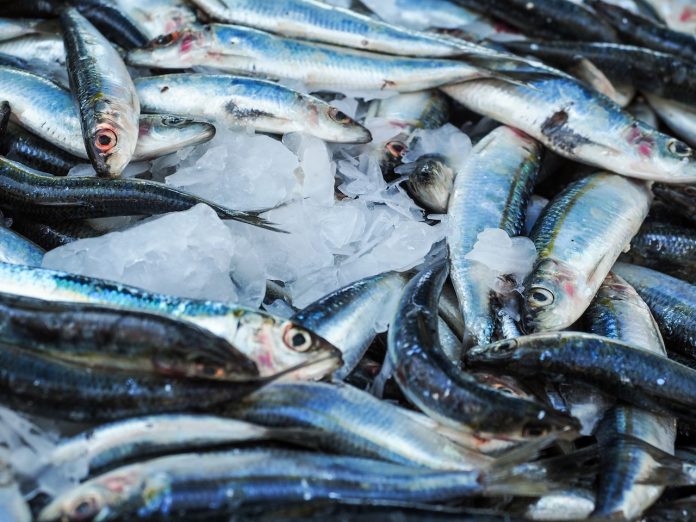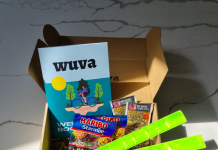The modern wrapping industry has gone far from being a tool to store and deliver goods. Nowadays, in addition to the protection of food from aggravating climatic factors, covers are responsible for communication with consumers, luring their attention, and providing important information. The importance of proper packaging design is difficult to overestimate. A well-developed wrapper can attract consumers and encourage them to buy goods, while a poor design can leave a high-quality product unnoticed among competitive goods on store shelves.
Seafood comes as a separate class of products that require satisfying specific packaging conditions. Covers for seafood must perform a set of functions, namely:
- be odor-proof. In most cases, seafood has a strong smell, so it is important to prevent its distribution.
- be leak-proof. Moisture usually leaks when fish is stored and shipped.
- be safe. Fish packaging materials do not emit toxic substances when they interact with food.
- be informative. Wrappers should have all the needed info about the shelf life and date of production, the place of fishing, etc.
- attract with a high-quality design. By assessing the quality of the cover customers judge the quality of food.
Placing products properly greatly affects customer loyalty toward a brand. Thus, businesses should pay particular attention to the choice of the most suitable and functional fish packaging. Enterprises frequently address specialized agencies to design custom wrappers and make attractive solutions.
Parameters for Wrapping Materials
Particular conditions for designing appropriate covers are set in the food sector. The consideration of this issue is possible within two major blocks.
Bulk wrapping material
- The size is suitable for comfortable handling and carrying.
- Easy to clean, store, and manage.
- Solutions for draining out melted water are provided.
- There are solutions for maintaining an optimal temperature regime due to proper insulation.
- The cover protects products from environmental pollution, spoilage, cracking, or pilferage.
- It is effective for transportation.
- The price is reasonable.
Retail and wholesale wrapping
When it comes to wholesale or retail covers, the next requirements are set. Wrappers:
- Protect from rancidity and oxidation.
- Do not allow the aroma and moisture to penetrate through the covers.
- Are tear and fragility resistant.
- Have a low rate of oxygen permeability.
- Have a low permeability of water vapor.
- Prevent odor distribution and retain smells inside.
- Are temperature extremes resistant and withstand sub-zero temperatures perfectly.
Kinds of Seafood and Fish Covers
When enterprises take into account the listed criteria, it is easy to find an appropriate option for your product. Businesses consult specialized agencies to find the best solution. The following 5 different packaging materials for fish products are the top ones and the most widely used:
1. Flexible Packaging
It is a huge class of covers that allows for packing any type of product. A wide assortment of wrappers is produced from different materials, including different kinds of plastic. Its great application is explained by the following benefits:
- enhanced barrier properties. Flexible packages retain odor, preserve the fish shape, and prevent moisture leaks.
- sustainability. Most wrappers are produced from recyclable or biodegradable materials.
- effective material use and allocation;
- packs are lightweight;
- flexible options are perfect for frozen or dry food.
Flexible packaging is the leading sector of the wrapper industry nowadays due to the wide profile of offered solutions. Various types of food require different tactics in packaging. The next solutions are taken to pack different sorts of seafood:
- Seafood snacks packaging. Three-layer covers are used to pack dry snacks. The wrapper consists of PET and PE layers with an adhesive transparent film with marketing info placed between them. A PET layer can be replaced with a polyamide film if food has sharp edges.
- Covers for smoked or salted fish, as well as semi-preserved food. Salt and marinades can affect many materials. Thus, when packing this type of product, three-layer packaging is developed. In this case, bio polyamide and polypropylene layers are used. An adhesive film is attached.
- Wrappers for fish and seafood. In this case, PP and PET layers with an adhesive layer are used.
2. Polypropylene Strapping film
It is a stretching film of different widths and lengths. Rollstock can be used for packing pallets with fish and seafood. Yet, note that it is not a good solution for individual wrapping since the material does not retain odor and moisture and has low barrier properties. The roll is used either semi-automatically or manually.
3. Skin Packaging
This fish packaging technology features tightly-fitting. The product is placed on a paperboard substrate (or without it), and the cover is sealed with vacuum. Fish is vacuumed with a plastic film. This method is beneficial since consumers can assess the condition of food, its freshness, and edibility.
4. Individually quick frozen (IQF)
The IQF technology implies that each piece of seafood is getting frozen individually to avoid a sticking effect. The shocking freezing preserves food nutritional properties, shape, taste, and smell. The strategy is widely applied for storing oysters, mussels, shrimp, and sets.
5. Cans
This way of packing food guarantees long-lasting storage. The shelf life of canned products reaches dozens of years. The secret of the process is that canned food is heated after sealing. This technology allows for preserving aroma, taste, and physical properties for years. Cod liver, sardine, mackerel, sprat, and other fish products are canned. Such products are ready for eating.
Fish and seafood covering for sale is a responsible task since it is important to preserve freshness, taste, and nutritional properties while retaining odors and moisture leaks. The listed materials used for fish packaging. To select the best option to cover and store your products, you should consider the following criteria: safety, protective qualities, sustainability, and design.
Flexible packaging comes as the best alternative for most kinds of seafood. Due to a wide diversity of options and package types, it is possible to select an appropriate wrapper for smoked, frozen, and semi-finished products and snacks. Moreover, packages satisfy all the criteria set for a quality cover.







